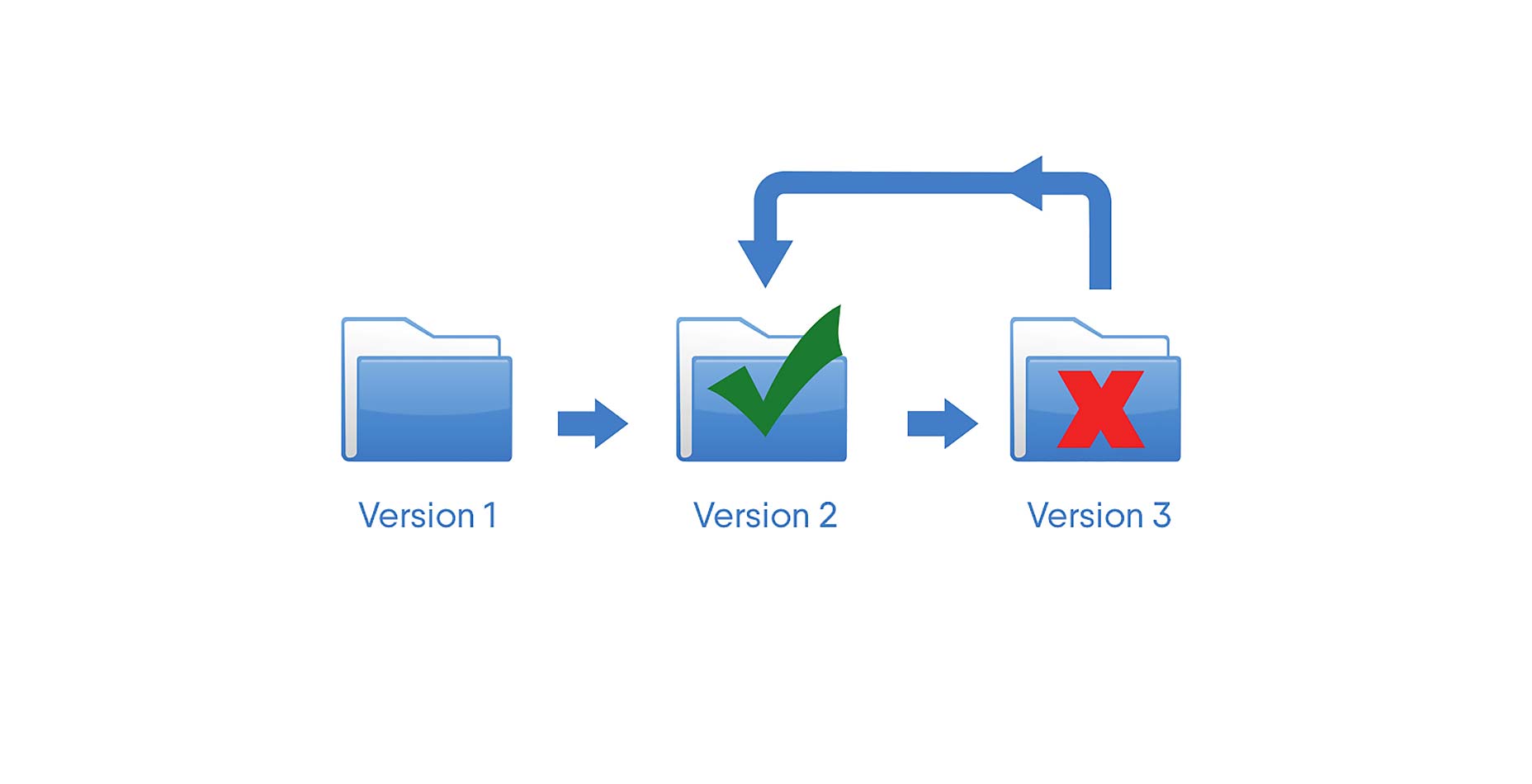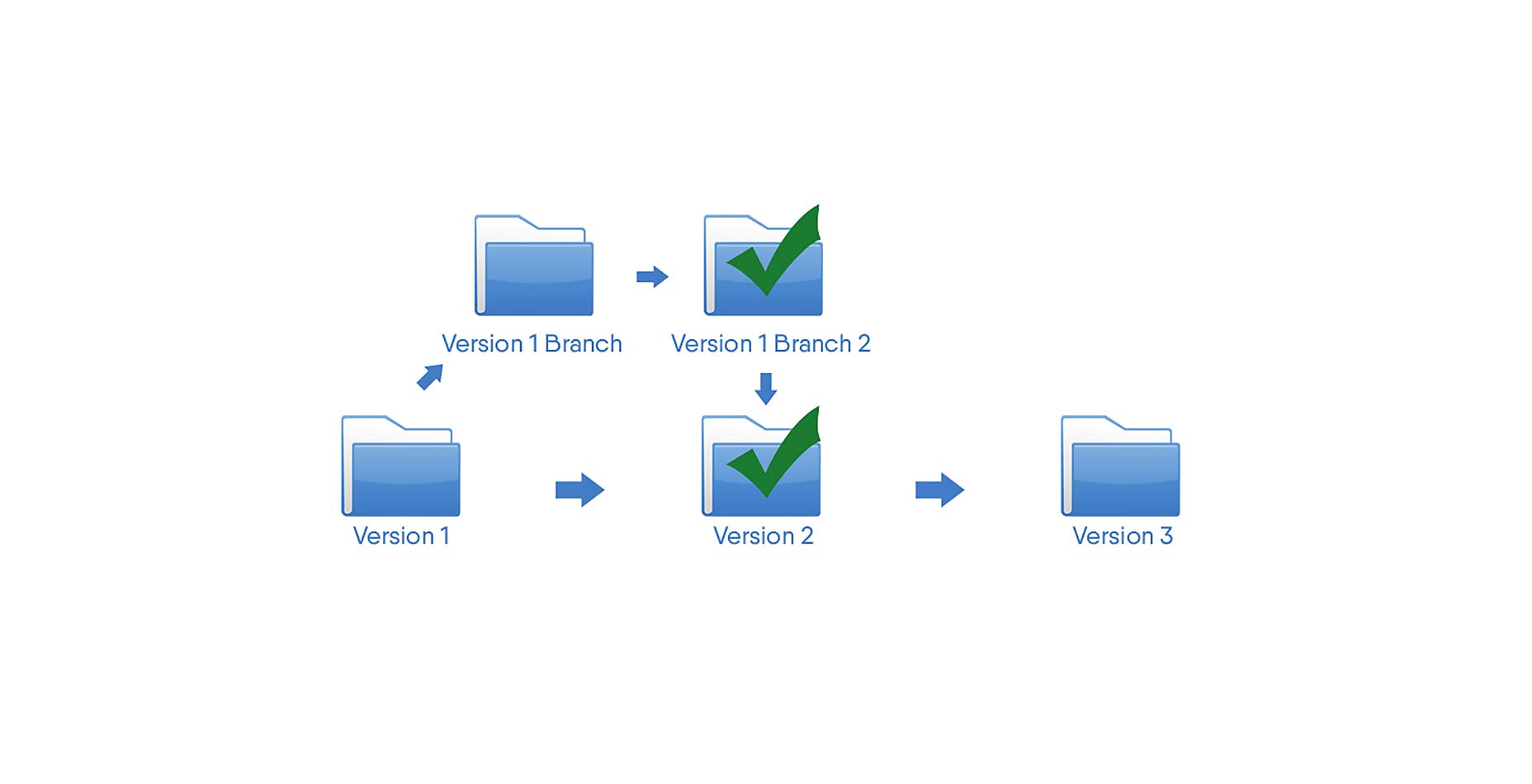
As a designer
How many times have you created a design file for a client in Photoshop or Illustrator, and ended up with around 10 different versions or variations of the same design? I sure have, but what we end up with is something like this:- Client File
- Client File New
- Client File Newest
- Client File Final
- Client File Final Final
- Client File Ultimate Final
The value of version control

It keeps you from overwriting working files
The last thing you want to do is save over the working copy of your files. What if something goes wrong? You’ll need a copy of your code that is saved at a good point where everything still works. Having a safeguard against overriding previous versions is a must, unless you want to start all over again.Teams can share projects and work on the latest files
Having a version control system in place will allow teams to work on the latest files of a project. This keeps members from working on older versions that may have bugs in them that other team members may have addressed and eliminated. Version control keeps everything organized and reduces team-wide errors.Accountability and user tracking
Version control enables you to keep track of who worked on a file and when. When a user makes changes and uploads those changes, they make notes, which enables the team to keep track of changes and when they took place in the development process. This is important, because if you discover a problem later, you can work backwards to the point where things went awry. Then, you can look at the changes that were made, which can help diagnose the problem.Communication
When a teammate makes notes, it can also help to keep track of the progress of a project. Let’s say a team member is responsible for four tasks, but they only mention three in their notes, it will prompt other members to check in to make sure everything was completed. This can keep you from having holes in your projects.
Branching and merging files or folders
Branching enables a user to create a separate copy of a selection of files or folders that they can work on exclusively. This allows developers to test things separately, without having to worry about breaking the original. Once all of the bugs are worked out, you can merge those changes back into the core system. Having the ability to separate projects into different pieces enables team members to work on areas they are responsible for, without affecting others’ work. This is especially useful for specialty development, where a team can work on standard core features, while specialty features can be worked on separately and merged later. It speeds up development, helping projects to go faster.
Once all of the bugs are worked out, you can merge those changes back into the core system. Having the ability to separate projects into different pieces enables team members to work on areas they are responsible for, without affecting others’ work. This is especially useful for specialty development, where a team can work on standard core features, while specialty features can be worked on separately and merged later. It speeds up development, helping projects to go faster.
Conflicts
Having multiple people working on different parts and pieces means that you’re dealing with a multi-faceted project. There are bound to be conflicts: team member 1 and team member 3 might create something that conflicts with each other, leaving the project broken. Version control counteracts this by allowing you to choose one path or the other. As a team you can decide what is best, and move forward from that point. Then, like before, everyone receives the latest working files and everyone is on the same page with the project.
Locating differences in files
With so many people working on a project, and so many different versions, it can be tough to locate the differences in files without version control. Finding these differences is essential to diagnosing where something went wrong. You can make comparisons and find where there is a conflict, or a change that someone made that caused problems. Otherwise, it’s tough, from a human perspective, to narrow things down. The whole process is less daunting when you can narrow your focus to specific areas of a project.It just makes everything less of a headache
Similar to how a content management system works for a website, version control makes it easier to manage multi-part projects. It allows you to focus more on the project itself instead of managing the process. Having a system in place will make projects go more smoothly.James George
James George is a Professional Web & Graphic Designer. He owns Design Crawl, a site for graphic designers featuring free vector graphics and templates. He also owns G Squared Studios, which handles web design in Knoxville.
Read Next
15 Best New Fonts, July 2024
Welcome to our monthly roundup of the best fonts we’ve found online in the last four weeks. This month, there are fewer…
By Ben Moss
20 Best New Websites, July 2024
Welcome to July’s round up of websites to inspire you. This month’s collection ranges from the most stripped-back…
Top 7 WordPress Plugins for 2024: Enhance Your Site's Performance
WordPress is a hands-down favorite of website designers and developers. Renowned for its flexibility and ease of use,…
By WDD Staff
Exciting New Tools for Designers, July 2024
Welcome to this July’s collection of tools, gathered from around the web over the past month. We hope you’ll find…
3 Essential Design Trends, July 2024
Add some summer sizzle to your design projects with trendy website elements. Learn what's trending and how to use these…
15 Best New Fonts, June 2024
Welcome to our roundup of the best new fonts we’ve found online in the last month. This month, there are notably fewer…
By Ben Moss
20 Best New Websites, June 2024
Arranging content in an easily accessible way is the backbone of any user-friendly website. A good website will present…
Exciting New Tools for Designers, June 2024
In this month’s roundup of the best tools for web designers and developers, we’ll explore a range of new and noteworthy…
3 Essential Design Trends, June 2024
Summer is off to a fun start with some highly dramatic website design trends showing up in projects. Let's dive in!
15 Best New Fonts, May 2024
In this month’s edition, there are lots of historically-inspired typefaces, more of the growing trend for French…
By Ben Moss
How to Reduce The Carbon Footprint of Your Website
On average, a web page produces 4.61 grams of CO2 for every page view; for whole sites, that amounts to hundreds of KG…
By Simon Sterne
20 Best New Websites, May 2024
Welcome to May’s compilation of the best sites on the web. This month we’re focused on color for younger humans,…














